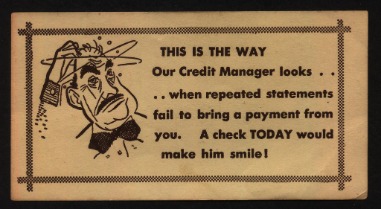Content
- How To Request A Letter Of Credit From Your Creditor
- International Trade
- What Is A Standby Letter Of Credit?
- The Money Behind A Letter Of Credit
- Legal Counsel
For example, Wells Fargo offers both commercial and standby letters of credit of up to $250,000 for small businesses with $2 million to $5 million in annual sales. A letter of credit definitely helps the financials of a deal go down smoothly, but they’re not a cure-all for every aspect of the transaction itself. For instance, the letter of credit doesn’t safeguard the passage of goods through international ports, nor does it guarantee that the items purchased will show up in pristine condition. All told, a letter of credit helps protect everyone involved in a transaction, too. The buyer gets certain protections as well, such as a guarantee that money won’t change hands until goods hit a certain point in the delivery process.Under Generally Accepted Accounting Principles, assets, liabilities, revenue and expenses are only recognized when they actually happen. Since a letter of credit guarantees a future liability, there’s no actual liability to recognize. As a result, letters of credit are disclosed as a footnote to the balance sheet. The advising bank advises the beneficiary and helps him to use the letter of credit. It also has the responsibility to send the required documents to the issuing bank. The advising bank has no obligation to pay if the issuing bank is unable to pay the beneficiary. Whichever bank you work with will have its own letter of credit application process, requirements, and terms.
- All the international letters of credit are governed by the regulatory body of the International Chamber of Commerce under the Uniform Customs and Practice for Documentary Credits.
- There are two basic types of letters of credit – commercial and standby.
- The confirming bank ensures payment under the letter of credit if the holder and the issuing bank default.
- In contrast, a standby letter of credit is a secondary payment method in which the bank pays the beneficiary only when the holder cannot.
- Once an importer and an exporter have agreed to a trade transaction, but before money or goods have changed hands, the importer will go to the importer’s bank and, for a fee, apply for a letter of credit.
- If the buyer is concerned about a dishonest seller, there are additional options available for the buyer’s protection.
The terms of the letter of credit may also state that other conditions be met, such as the delivery of a quality certificate and/or a certificate of insurance. The party that controls the terms of the letter of credit is the issuing bank, which normally uses a standard form for this purpose. A letter of credit is a financial document that facilitates international as well as domestic trade. There are two basic types of letters of credit – commercial and standby. The commercial LC is the primary mechanism of payment while the standby LC is a secondary mechanism.
How To Request A Letter Of Credit From Your Creditor
Off balance sheet events are comprised of financial transactions that are not captured or disclosed anywhere on a company’s balance sheet . Their growth in popularity by reporting companies has become problematic for investors, creditors and financial regulators. Many companies have mastered the art of redirecting certain liabilities off their books, thus concealing the real financial position of a company. While this practice is not illegal, it does make it difficult to scrutinize a company’s financial statements to get a true picture of the companies debit structure. As we previously wrote, a letter of credit constitutes a guarantee for the exporter that payment will be issued on time for the goods being dispatched to the buyer. In this situation, a letter of credit will ensure both parties that the transaction will be conducted and concluded properly and payment will be surely released once the pre-negotiated conditions are met.

A standby letter of credit is intended to guarantee payment by a third party. This instrument is of great benefit to an entity that may have little credit history, if it can find an entity willing to post the letter of credit. This instrument is usually outstanding for a period of one year, after which it expires.
International Trade
In most cases, a letter of credit is a helpful safeguard for large or complicated business deals. Then, the bank holds onto the money and either dispenses it to you directly when the time comes or fulfills the payment if your buyer fails to do so themselves. There’s no fussing over unpaid invoices, partial payments, or issues tracking down an invoice. A letter of credit, or credit letter, is a bank guarantee that a specific payment will be made. As a business owner, you may request a letter of credit from a customer to guarantee payment for products or services you’re providing. In this instance, a letter of credit is the way for an impartial third party—in this case, the bank—to guarantee that your customer can pay you for the goods or services provided.

In the event that the buyer is unable to make payment on the purchase, the seller may make a demand for payment on the bank. The bank will examine the beneficiary’s demand and if it complies with the terms of the letter of credit, will honor the demand. Most letters of credit are governed by rules promulgated by the International Chamber of Commerce known as Uniform Customs and Practice for Documentary Credits. Banks will typically require collateral from the purchaser for issuing a letter of credit and will charge a fee which is often a percentage of the amount covered by the letter of credit. A beneficiary can get the letter of credit discountedto be paid earlier. The advising bank advances the payment before the various sales and shipping documents are presented.
What Is A Standby Letter Of Credit?
The negotiating bank handles the ins and outs of actually getting the seller paid and works on the beneficiary’s side of the transaction. The beneficiary provides documents and information to the negotiating bank, which will then act as a go-between with the issuing bank .To move forward, the buyer needs to apply for a letter of credit at a bank in their home country. The buyer may need to have funds on hand at that bank or get approval for financing from the bank. A letter of credit is a more complicated financial transaction than those you might be more accustomed to, but it might be the best course of action for your business at some point. This information is meaningful and magnificent which you have shared here about the Letter of credit. I am impressed by the details that you have shared in this post and It reveals how nicely you understand this subject. Tradeimex is one of the trusted global export import data provider that provides the latest information to importers & exporters. Letters of credit are sometimes used to defraud banks through presentment of false documentation indicating that goods were shipped when they actually were not.
The Money Behind A Letter Of Credit
Upon presentation of the documents, the goods will traditionally be in the control of the issuing bank, which provides them security against the risk that the buyer will repay the bank for making such a payment. When a company obtains a letter of credit, it’s basically obtained a guarantee of payment from a bank to engage in a transaction.
What is Capex LC?
Capital goods can be imported under Capex LC (Capital Expenditure LC). Though this mechanism funds are arrange at interest rate of 3.00 to 5.00 % for tenor of three years and upto five years in few sectors.Let’s say your business receives a big order from an overseas company. There are plenty of factors to consider, such as getting the order shipped and making sure it arrives properly and on time. In June of 2006, the FASB introduced a new Accounting Standards Update which affect bank lends who issue letters of credit. It was designed to try and improve the financial reporting of these intuitions. It requires lenders to speed up their reporting of losses due to credit loans and other financial instruments. A few countries have created statutes in relation to letters of credit. For example, most jurisdictions in the United States (U.S.) have adopted Article 5 of the Uniform Commercial Code .Issuing BankThe issuing bank is also exposed to risks which he may seek to mitigate through various techniques. He will be exposed to the insolvency risk of the applicant, that is, the risk the applicant runs insolvent before he is able to repay the letter of credit. Secondly, the bank will be exposed to a risk of fraud by the seller, who may provide incorrect or falsified documents to receive payment. If the bank ought to have known that the documents were a fraud, then the bank will be exposed to a fraud.
Legal Counsel
Letters of credit are typically provided within two business days, guaranteeing payment by the confirming Citibank branch. Because a letter of credit is typically a negotiable instrument, the issuing bank pays the beneficiary or any bank nominated by the beneficiary. If a letter of credit is transferable, the beneficiary may assign another entity, such as a corporate parent or a third party, the right to draw. Typically, this will be a small percentage of the amount you’re guaranteeing—say, 2%—and may also include closing fees, depending on the bank. Lawyers can enter the fray with drafting and reviewing a letter of credit’s terms and conditions. It’s usually a good idea to get legal counsel involved in these kinds of deals to make sure that the language of an agreement looks good, is legally acceptable, and that it mitigates risk to either party.

They are important and helpful tools, but they only work when you get all of the details right. A minor mistake or delay can wipe out all of the benefits of a letter of credit.The letter is issued and sent to the exporter’s bank to constitute an obligation to pay for the goods as long as a set of pre-established conditions are met. These conditions are usually in the form of documents to be presented such as commercial invoices, tax forms, certificates of origin, among others.
The Advising Bank
If you buy equipment, capital assets and inventory without using the letter of credit, the purchase is accounted for either as cash or credit. The equipment or inventory you buy is listed as a balance sheet asset and a credit purchase appears in the sheet’s liabilities section. For example, to account for a $5,000 inventory purchase, debit Inventory for $5,000 and credit cash for $5,000. If you’re using credit, debit Inventory for $5,000 and credit accounts payable for $5,000.
Eam, Erm Or Cmms Which System Is Right For Your Company?
That’s where freight forwarders come in—these companies make international shipping easier and handle the logistics that come with sending products overseas. Intermediaries usually connect applicants and beneficiaries to help them strike a deal and can facilitate the creation of a letter of credit to make it all go smoothly.